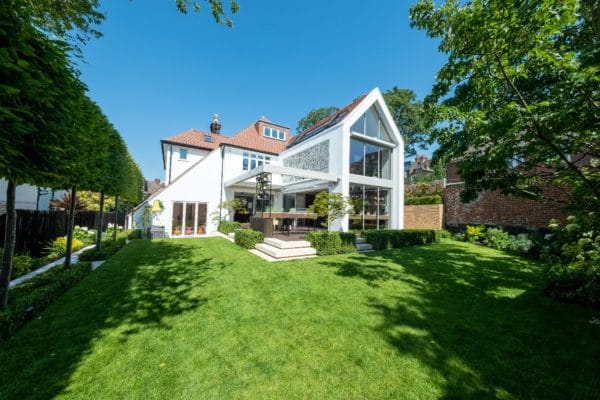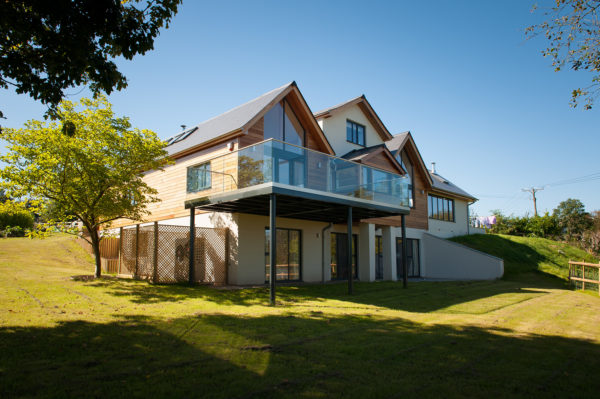Where Should I Live During My Build?
Filled with the excitement of planning your project, it can be easy to overlook the essential consideration of where to live during the works. If you’re self building and your collateral is tied up in your existing home, should you sell to release the cash, borrow money against the equity to rent somewhere or live on site?
Getting it sorted before you start can save money and time later when you would rather be concentrating on finishing your future home. So, what are the options?
Stay in your current home
One option is to stay in your existing home while your project takes shape, then sell it at the end of the build. While some mortgage lenders do allow this, the downside is that interest accrued during the build eats into funds that could be used on the new project. If your mortgage is in staged payments, any delays that slow the progress of the build can add more interest on the self build loan and you’ll spend longer paying the mortgage on your existing property.
Using an accelerator mortgage, where 95% of the money is released at the beginning of the build, gets around one problem but not the cost of living at home and perhaps a long way from the building site, which can cause additional stress during the project as you may struggle to keep tabs on progress.
Rent whilst you build
Living in a rental property could give you a safe haven away from the site, but close enough to stay on top of the works. An unfurnished home is ideal, as you can move your furniture and personal possessions with you. If the rental property is already furnished, you’ll need to pay for storage for some or all of your possessions on top.

This family chose to live on site during their renovation, moving from room to room to avoid the dust and mess. Learn more about their project here
The downside to renting is that it can easily cost over £1,000 per month for a family house, although a small flat would cost less. Add to this a deposit of three months’ rent and cashflow can be an issue.
If you have pets, they may not be allowed into rental accommodation. With kennel fees costing between £10-£15 per day per dog, boarding for nine months would become very expensive.
Live on the building site
Being on the spot 24/7 will mean you can keep a watchful eye on your build and, rather than spending time travelling between home and site, you can work on the house yourself with the aim of finishing the build much sooner. But such involvement can seriously damage your social life, not to mention that other members of the family may take a dim view of living on a building site for a year. Also, young children and hazardous building sites don’t mix, unless the area can be fenced off. If you do decide to live on site, remember to lay all utilities at the beginning of the build so that you and your family can live in (relative) comfort.
Move to a static caravan
Bought new or second-hand from other self builders, or hired from a supplier, a static caravan can be delivered to site and hooked up to mains electricity to create an instant home. It can also come in handy as a site office and meeting place for visitors.
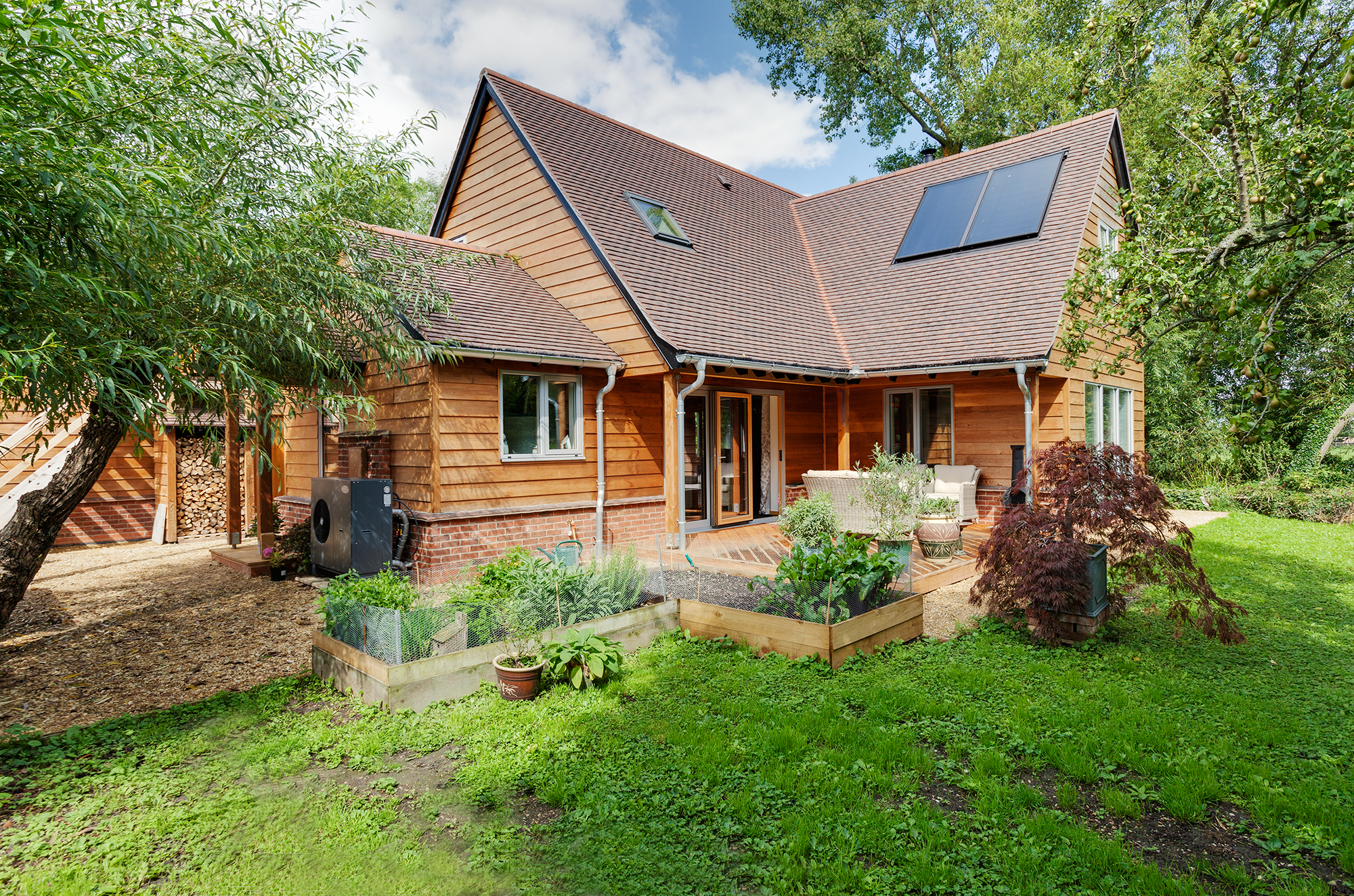
This couple lived in a caravan on site whilst they built their barn-style home. Learn more abot the project here
The downside is getting rid of it afterwards. Whether you sell it on to recoup some of the cost or return it to the hire company, there has to be space to lift or tow the caravan away from the building plot – a problem if you have built to your boundaries.
Mobile home/camper van
These are a popular option, not least as they can be moved around the plot to make room for works or deliveries. The interior is smaller than a static caravan but still ideal for one person or a couple. After the build it can be used for a well-earned holiday or sold on.
Garden room or log cabin
Fast becoming a popular route to create extra rooms without moving home, a garden room could be the perfect place to live while building your home. Most are delivered in kit form to be assembled on site, either by the self builder or the supplier, and many of these habitable outbuildings can be provided with mini bathrooms and kitchens.
After the build, the annexe can later become a home gym, artist’s studio, office or refuge for teenagers (or, indeed, yourself) – planning permission allowing. “If the setting is right and you have approval, log cabins can even be rented out as holiday homes after the build is complete,” suggests Trevor Kay of Cabinville.
Planning permission
Ask about permission for a pre-fab garden building or a static caravan when you submit plans for your new home. In some instances permission may be needed.
This is likely to depend on the size of the accommodation, where you are in the country, and whether you plan to rent the unit out afterwards. Also, don’t forget to check that your site insurance also covers your temporary accommodation.
Storage
Assuming you’re not going to furnish your new home from scratch with everything brand new, where will you keep all the furniture and possessions you’ve accrued over the years? Storage companies such as the Big Yellow Group offer space to stow away your property for as long as required, with insurance cover included in the hire charges. Depending on the deal, you may be able to access your belongings at any time, and some companies’ rates include handy extras such as packing materials, dust covers for furniture and van hire.
Main image: An outbuilding such as this one by Round Wood of Mayfield could act as living quarters or a site office




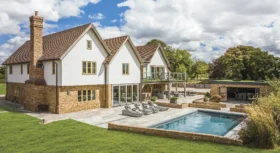


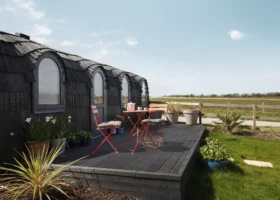




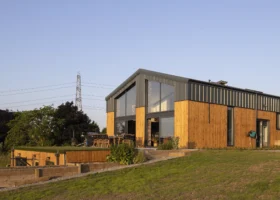





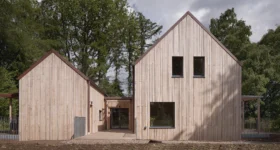









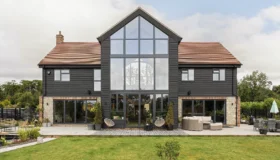














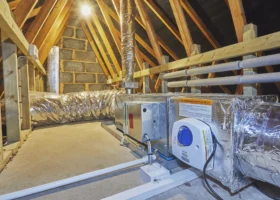
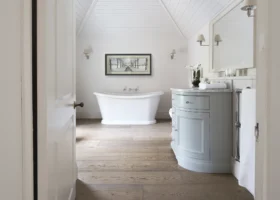




















































 Login/register to save Article for later
Login/register to save Article for later



